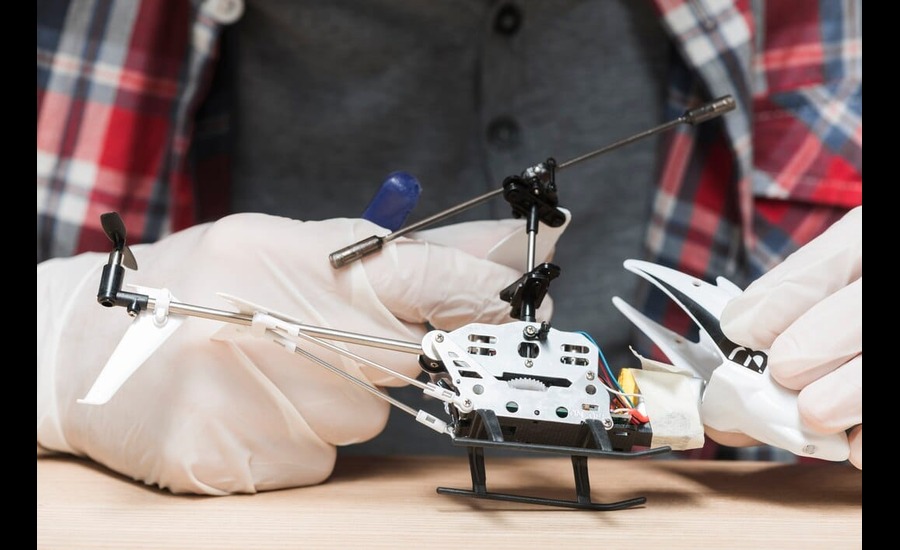The Role of Thermal Drones in Modern Industrial Inspections and Maintenance
Introduction
In the rapidly evolving landscape of industrial technology, the integration of drones equipped with thermal cameras has emerged as a game-changing innovation. These advanced tools are transforming how industries conduct inspections, maintenance, and monitoring of critical infrastructure. Thermal drones, combining the mobility of unmanned aerial vehicles (UAVs) with the precision of thermal imaging, provide unprecedented insights into the health and performance of industrial assets. This article explores the role of thermal drones in modern industrial inspections and maintenance, highlighting their benefits, applications, and the impact they are having on various sectors.
The Evolution of Thermal Imaging in Industry
Thermal imaging has been a cornerstone of industrial inspections for decades, providing the ability to detect heat patterns and anomalies that are invisible to the naked eye. Traditionally, thermal cameras were handheld devices used by technicians to inspect equipment and infrastructure. While effective, this method had its limitations, particularly in accessing hard-to-reach areas and covering large distances quickly. The advent of drone technology has revolutionized thermal imaging, allowing for aerial inspections that are faster, safer, and more comprehensive.
The integration of thermal cameras with drones represents the latest advancement in this field. Thermal drones are capable of capturing high-resolution thermal images from the air, covering vast areas and difficult-to-access locations with ease. This technology is particularly valuable in industries such as power generation, oil and gas, construction, and telecommunications, where regular inspections are critical for ensuring safety, efficiency, and compliance with regulations.
Applications of Thermal Drones in Industrial Inspections
The use of thermal drones has expanded across various industrial sectors, each with unique applications that enhance operational efficiency and safety. Below are some of the most prominent applications of thermal drones in industrial inspections:
1. Power Generation and Distribution
In the power generation and distribution sector, thermal drones are used to inspect electrical substations, power lines, and transformers. These inspections are crucial for identifying overheating components, which can indicate potential failures or inefficiencies. Thermal drones can quickly scan large areas, detecting hot spots that may be caused by loose connections, overloads, or deteriorating insulation. By identifying these issues early, maintenance teams can take proactive measures to prevent costly downtime and ensure the continuous delivery of electricity.
2. Oil and Gas Industry
The oil and gas industry is another sector where thermal drones have made a significant impact. Thermal imaging is essential for detecting leaks in pipelines, tanks, and other infrastructure. Drones equipped with thermal cameras can cover extensive pipeline networks, both onshore and offshore, identifying temperature variations that signal leaks or other issues. This capability not only enhances safety but also helps companies comply with environmental regulations by minimizing the risk of spills and emissions.
In addition to leak detection, thermal drones are used to monitor flare stacks, ensuring they are operating within safe temperature ranges. Flare stack inspections are critical for preventing unplanned releases of gases, which can be hazardous to both the environment and human health.
3. Construction and Building Inspections
In the construction industry, thermal drones are used for building inspections, particularly in assessing the thermal performance of structures. These inspections can identify areas of heat loss, poor insulation, and potential moisture ingress, which are critical for maintaining energy efficiency and structural integrity. Thermal drones can provide a detailed thermal map of a building, allowing engineers and architects to make informed decisions about repairs, retrofits, and energy-saving measures.
Thermal drones are also valuable in monitoring the progress of construction projects. By capturing thermal images at various stages of construction, project managers can ensure that work is proceeding according to plan and that there are no hidden issues that could compromise the quality of the build.
4. Renewable Energy Sector
The renewable energy sector, particularly solar and wind energy, has also benefited from the use of thermal drones. In solar farms, thermal drones are used to inspect photovoltaic panels, identifying defective cells or modules that may be underperforming. This allows for targeted maintenance, ensuring that the entire array operates at peak efficiency.
In wind farms, thermal drones are employed to inspect wind turbine blades for signs of wear, damage, or overheating. These inspections are critical for maintaining the reliability and longevity of wind turbines, which are often located in remote and challenging environments.
Advantages of Using Thermal Drones in Industrial Inspections
The adoption of thermal drones in industrial inspections offers numerous advantages over traditional methods. These advantages include:
1. Enhanced Safety
One of the primary benefits of using thermal drones is the increased safety they provide. Traditional inspection methods often require technicians to work at height, in confined spaces, or in close proximity to hazardous materials. Thermal drones eliminate the need for such risky operations by allowing inspections to be conducted remotely. This reduces the likelihood of accidents and injuries, protecting both workers and assets.
2. Increased Efficiency and Speed
Thermal drones significantly reduce the time required to conduct inspections, particularly in large or complex facilities. Drones can cover vast areas quickly, capturing thermal images that would take much longer to obtain using traditional methods. This increased efficiency translates to faster maintenance cycles, minimizing downtime and reducing operational costs.
3. Comprehensive Data Collection
Thermal drones provide high-resolution thermal images that offer detailed insights into the condition of equipment and infrastructure. These images can be analyzed in real-time or stored for later review, allowing for comprehensive data collection and analysis. The ability to capture and analyze thermal data over time also enables predictive maintenance, where potential issues are identified before they become critical, further enhancing operational reliability.
4. Cost-Effective Inspections
While the initial investment in thermal drones may be significant, the long-term cost savings they offer are substantial. By reducing the need for manual inspections, thermal drones lower labor costs and minimize the need for expensive equipment such as scaffolding, cranes, or helicopters. Additionally, the early detection of issues through thermal imaging can prevent costly repairs and unplanned downtime, providing a strong return on investment.
Challenges and Considerations in Using Thermal Drones
Despite the numerous benefits, the use of thermal drones in industrial inspections is not without challenges. Some of the key considerations include:
1. Regulatory Compliance
The operation of drones is subject to strict regulations, particularly in industries such as oil and gas or power generation, where safety and environmental concerns are paramount. Companies must ensure that their use of drones complies with local and national regulations, including obtaining the necessary permits and certifications. Additionally, operators must be trained and qualified to fly drones, particularly in complex or hazardous environments.
2. Environmental Factors
Thermal imaging can be affected by environmental factors such as weather conditions, temperature variations, and the presence of reflective surfaces. These factors can impact the accuracy and reliability of thermal data, making it essential for operators to understand and account for these variables when conducting inspections. For example, inspections conducted in extreme heat or cold may require adjustments to the drone’s settings or the timing of the flight.
3. Data Management and Analysis
The use of thermal drones generates large volumes of data, which must be managed, analyzed, and stored effectively. Companies must invest in the necessary software and hardware to process thermal images and integrate them into their existing maintenance systems. Additionally, the interpretation of thermal data requires specialized knowledge and expertise, making it important to have trained personnel or access to third-party analysis services.
The Future of Thermal Drones in Industrial Inspections
As technology continues to advance, the capabilities of thermal drones are expected to expand, further enhancing their value in industrial inspections. Future developments may include improved thermal sensors with higher resolution and sensitivity, allowing for even more detailed and accurate inspections. Additionally, the integration of artificial intelligence (AI) and machine learning algorithms could automate the analysis of thermal data, identifying patterns and anomalies that may not be immediately apparent to human operators.
Another exciting development is the potential for fully autonomous thermal drones, capable of conducting inspections without the need for human intervention. These drones could be programmed to follow specific flight paths, conduct regular inspections, and transmit data in real-time, providing continuous monitoring of critical infrastructure.
Conclusion
Thermal drones represent a significant advancement in the field of industrial inspections and maintenance, offering enhanced safety, efficiency, and data collection capabilities. Their ability to provide detailed thermal imaging from the air has made them an invaluable tool in industries such as power generation, oil and gas, construction, and renewable energy. While there are challenges to consider, including regulatory compliance and environmental factors, the benefits of using thermal drones far outweigh the drawbacks.
As technology continues to evolve, the role of thermal drones in industrial inspections is set to grow, providing even greater insights and contributing to the safety, reliability, and efficiency of industrial operations. For companies looking to stay ahead of the curve, investing in thermal drone technology is not just an option—it’s a necessity for maintaining a competitive edge in today’s rapidly changing industrial landscape.





